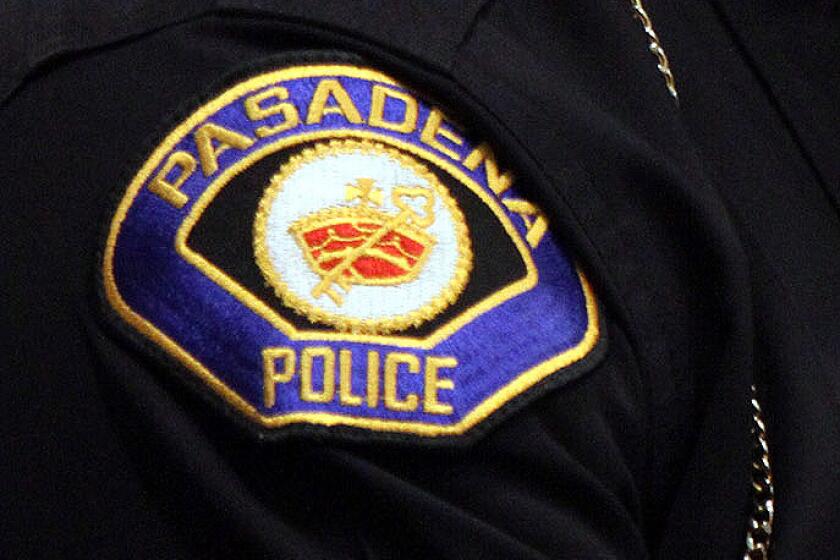Trickling Down : Where Our Water Comes From
- Share via
Until the Los Angeles Aqueduct was completed in 1913, the arid San Fernando Valley had few options for obtaining water. Engineer William Mulholland masterminded the plan to bring water south from the Sierra Nevada, supplying water-starved Los Angeles but ruining fertile Owens Valley farmland.
Today the Los Angeles Aqueduct remains the city’s primary source of water, but when Sierra snowpack is lacking, the city must purchase large quantities of water from the Metropolitan Water District, the wholesaler that oversees State Water Project supplies. This consists of water transported via the California Aqueduct from the Sacramento Delta region and water from the Colorado River. This year more than half the city’s supplies will be purchased from MWD. To offset the cost, a 9% rate increase for Department of Water and Power customers went into effect April 1.
The DWP is researching ways to augment future water supplies. A plan to recycle waste water treated at the Tillman Water Reclamation Plant in Van Nuys could begin by 1998. Desalinating ocean water is currently not an option because of its cost.
Local ground water, along with the California Aqueduct, supply the Santa Clarita and Antelope valleys with water. Santa Clarita has its own water wholesaler, Castaic Lake Water Agency, which sells State Water Project water to retailers in Santa Clarita, Valencia and Newhall.
Three Sources of Water
Los Angeles Aqueducts
* Where it comes from: Snowpack from the eastern Sierra Nevada.
* How it’s transported: Melted snow flows into the Owens River and is propelled by gravity through the 338-mile Los Angeles Aqueduct--a series of open and covered channels, pipes, tunnels and siphons--and also through an adjacent, shorter aqueduct.
* Where it ends up: Sylmar, at the Los Angeles Aqueduct Treatment Plant. From there it is pumped to various reservoirs; Los Angeles and Encino reservoirs hold water stored for the Valley. Chlorine is added again at reservoirs. From there it is pumped to trunk lines that criss-cross beneath the city and then to smaller water mains into communities.
State Water Project
The California Aqueduct and Colorado River
* Where it comes from: Sacramento Delta region. Water from the Colorado River does not normally supply the Valley, but it did during the drought.
* How it’s transported: Via the California Aqueduct through the San Joaquin Valley, pumped over the Tehachapi Mountains. Here the aqueduct splits into two: the west branch goes through Pyramid Lake into Castaic Lake, the east branch to the San Bernardino area. Both Pyramid and Castiac lakes are reservoirs serving Santa Clarita Valley and parts of Ventura County.
* Where it ends up: Castaic Lake Water Agency treats its portion of water at the Earl Schmidt Water Filtration Plant at Castaic Lake. MWD water is piped from Castaic to Joseph Jensen Filtration Plant in Granada Hills, where it’s treated and then pumped to water agencies that distribute or sell it to water retailers. Some MWD water is also treated at the Los Angeles Aqueduct Treatment Plant.
Groundwater
* Where it comes from: Dozens of deep wells throughout the Valley, in Tujunga and North Hollywood, and along the Los Angeles River.
* Where it ends up: Well water receives chlorine to kill bacteria but isn’t filtered since the ground acts as a filter. It is blended with water from other sources.
A Long Journey to the Tap
Treatment Process
The Los Angeles Aqueduct Filtration Plant treats up to 600 million gallons a day.
1. Screening
Bar racks and fine rotating screens remove foreign materials such as leaves, twigs and pebbles.
2. Ozonation
Ozone, the primary disinfecting agent, is injected into the water as it flows through the basins.
3. Rapid Mixing
Water enters rapid mixers where chemicals are added to help remove dust-like particles. Fast-moving blades disperse chemicals, which cause the particles to cluster.
4. Flocculation
Water is slowed down and mixed, which is called flocculation. Paddle blades stir the water, allowing particles to collide and stick together to form larger particles called floc.
5. Filtration
Water flows to filters and is evenly distributed over 24 filter beds. Each filter is a large concrete box containing a 6-foot-deep layer of crushed anthracite coal over a thin gravel base. Water flows down through coal, which traps the floc.
6. Chlorination
Filtered water is chlorinated.
Cost of Water
Desalinated ocean water would be more costly than other water sources.
(Cost per acre-foot)
MWD imported water: $385
Reclaimed water: $400-$800
Desalinated water: $1,200-$1500
Water Use
In 1992-93 the amount was about 15% less than was used in the late 1980s due to conservation and improved plumbing hardware:
Used by Los Angeles metro area: 585,000 acre-feet
Used by Valley: 235,000 acre-feet (40% total)
(An acre-foot is the amount of water sitting 1 foot deep on one acre; it’s enough to supply two typical families for a year.)
Los Angeles: 585,000 acre-feet
The amount of water used by the Valley last year would sit 236 feet deep on a football field.
Water Source Breakdown
Where Los Angeles got its water in fiscal 1992-93:
Metropolitan Water Distric: 50%
Los Angeles Aqueduct: 40%
Groundwater: 10%
*
1994 projection:
Metropolitan Water Distric: : 50%
Los Angeles Aqueduct: 30%
Groundwater: 20%
A Plan to Recycle Water
By 1998, the DWP plans to add to its sources by using recycled water. This involves piping water treated at the Tillman sewage treatment plant in the Sepulveda Basin to the Pacoima and Hansen spreading grounds. As it seeps through the ground, the water would be filtered naturally by sand and gravel. This water would augment the current well supply, providing an additional 35,000 acre-feet a year.
Sources: Los Angeles Dept. of Water and Power; Metropolitan Water District; Castaic Lake Water Agency; “Rivers in the Desert”
More to Read
Sign up for Essential California
The most important California stories and recommendations in your inbox every morning.
You may occasionally receive promotional content from the Los Angeles Times.













